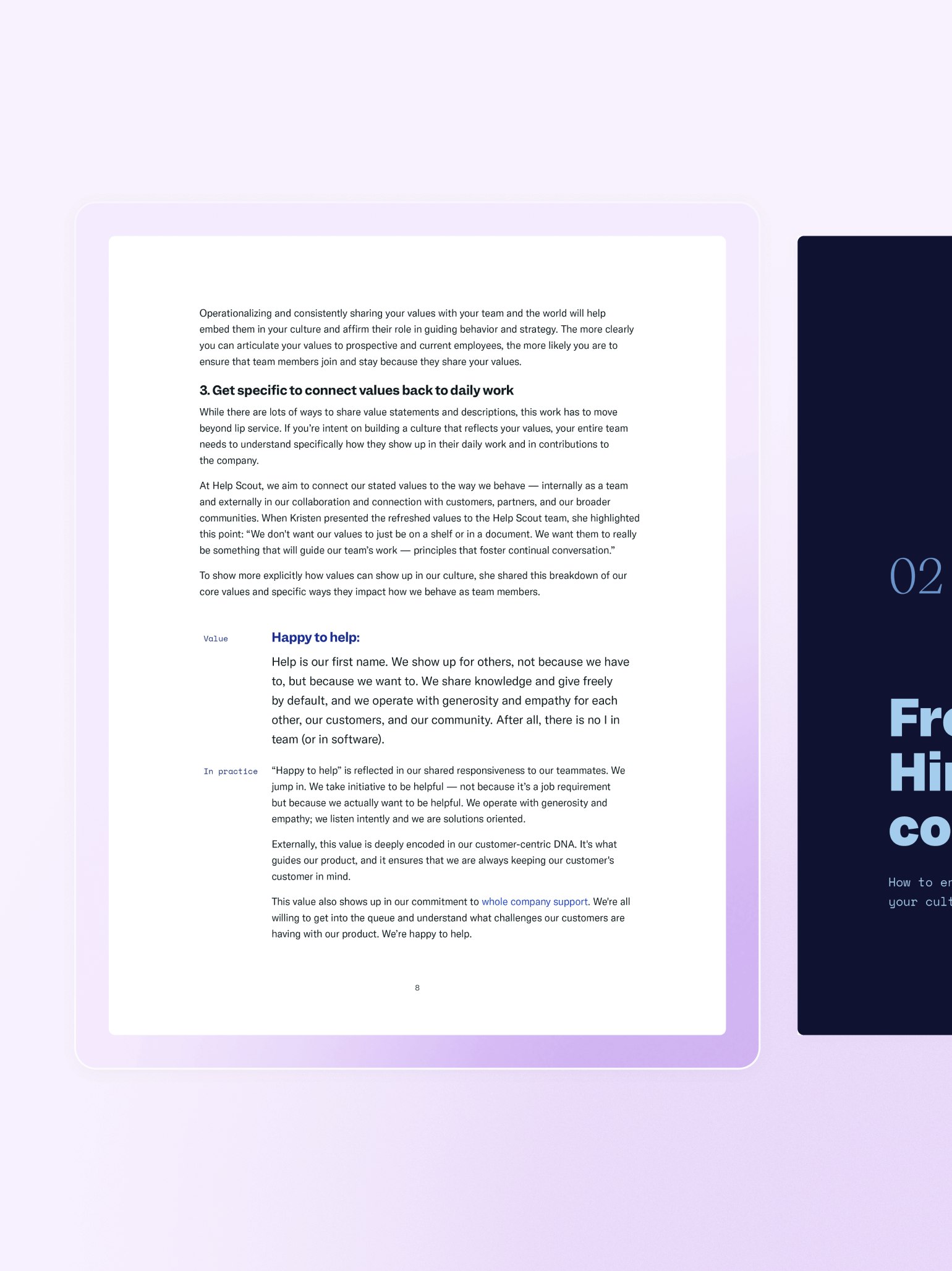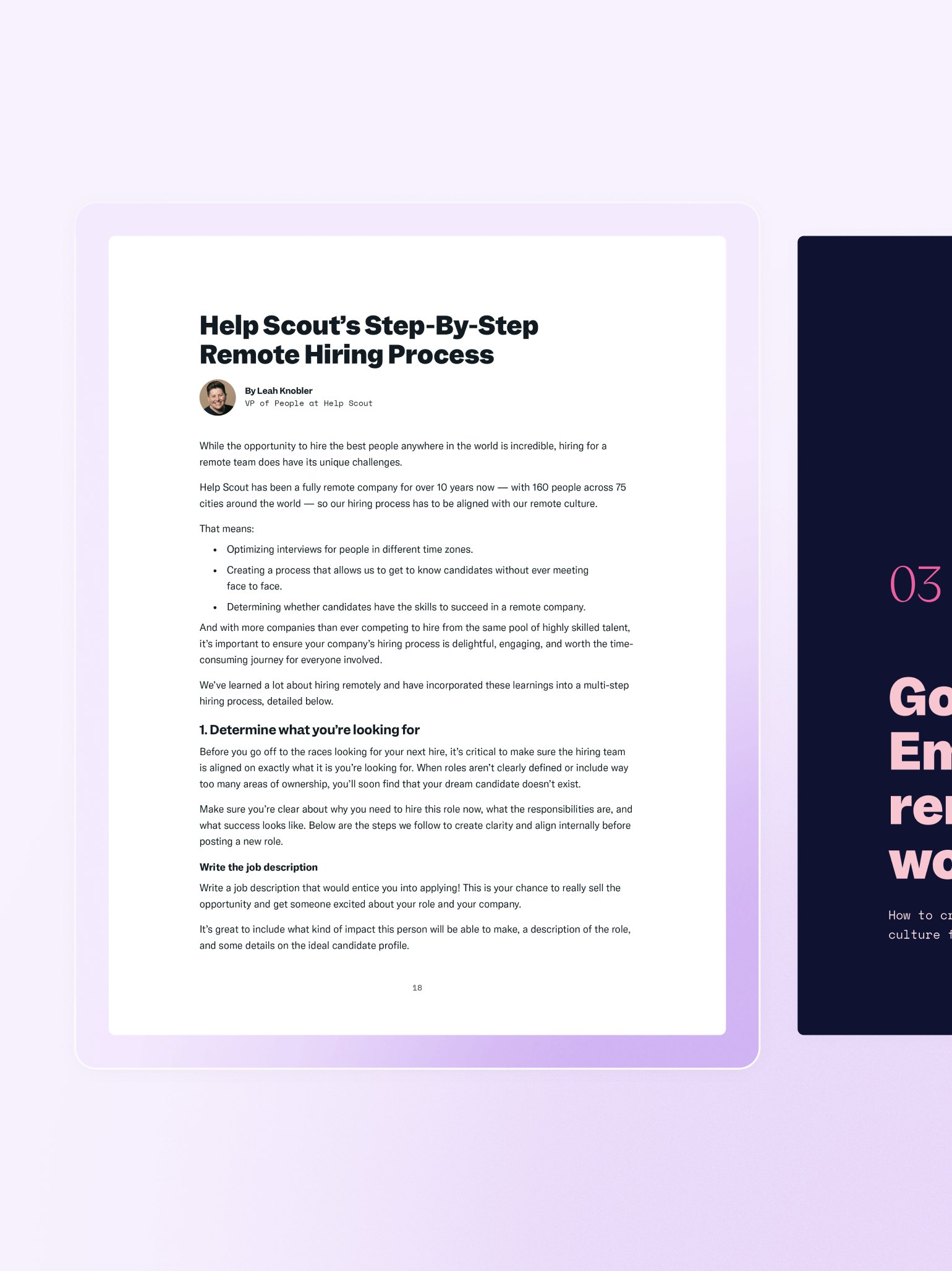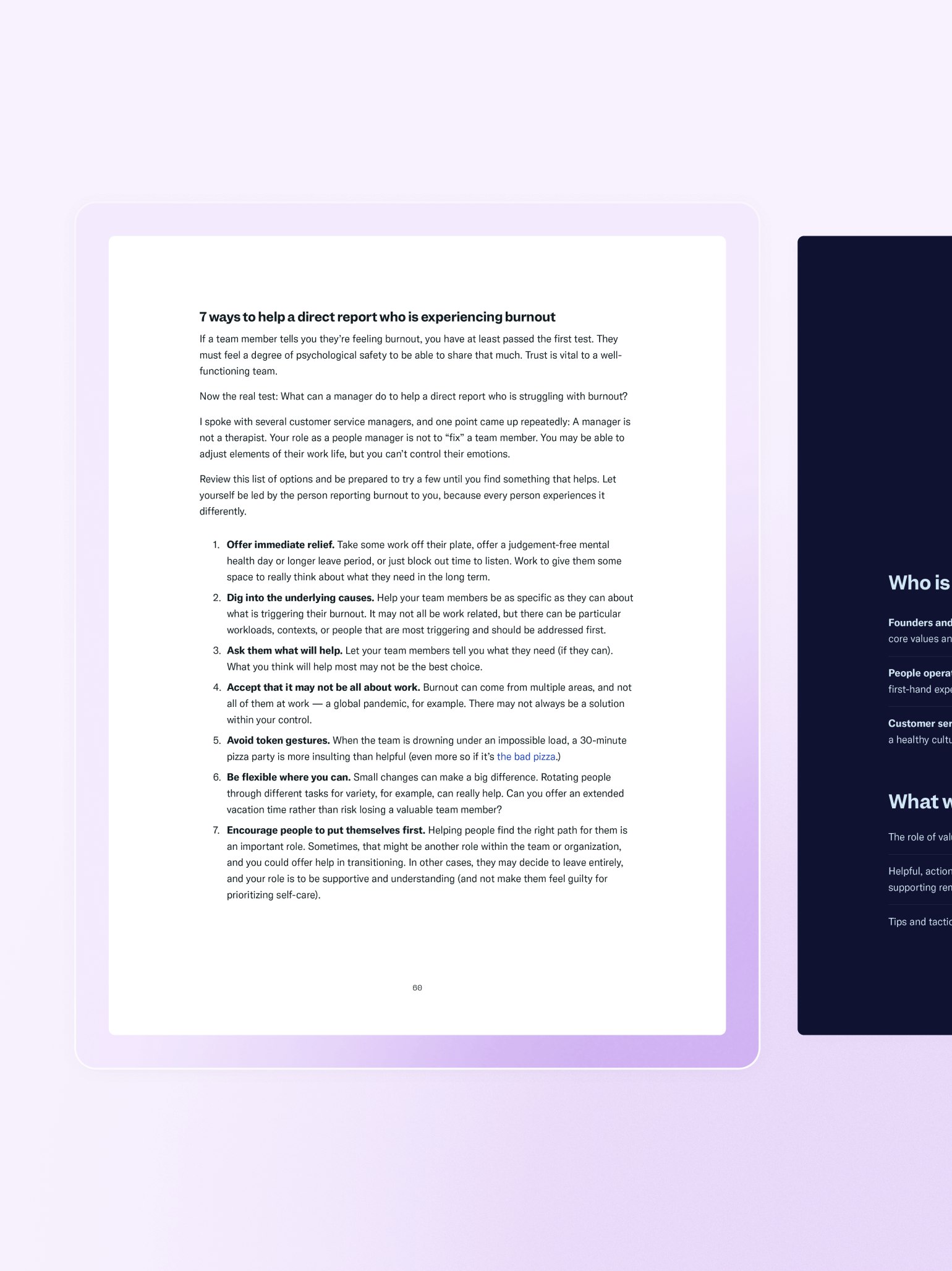Examples and advice from leaders who have been building and improving a remote culture for over a decade.
The Help Scout Guide to Crafting Culture
How to save time across timezones, collaborate better, and build a positive, healthy remote culture.

Inside: 12+ years of remote work learnings

Behind-the-scenes lessons and insights from our own path to smarter, more collaborative remote work.

In-depth, practical blueprints for setting up your remote work systems, from hiring to compensation to team structure.

Learn what to prioritize on your own distributed teams, and what does and doesn’t work when it comes to working together efficiently.

Get real tips you can apply to your own leadership style and team management today.









As a founder or manager, remote teams require more structure, better communication, and a high level of proactive transparency from you.
Time-saving tips for remote teams
Hone your writing skills
Most of your communication will be written so it’s easy for people to consume on their own time. You’ll have to write with a level of transparency that feels uncomfortable at first so that everyone feels more connected to the team and business.
Deliver critical feedback face-to-face
Instead of leaving critical feedback in a comment or another async channel, write it down (but don’t send it), then schedule a video chat with the person or people involved to talk through it.
Pair on challenging problems
Know when async isn’t enough. Sometimes, you need to solve hard problems or move a project forward with real-time communication to save time.
Host live project kick-offs and sync-ups
Every time you start work on a project, hold a kick-off meeting including all participants. On projects that include more than a few people, conduct a weekly sync meeting. Maybe it only lasts 10 minutes, but it keeps everyone rowing in the same direction.
Change the venue for long chats
Sync up when a conversation starts to draw out or get into debate territory. Maybe it’s a chat that escalates, or maybe you spend more than 10 minutes drafting an email or comment. When in doubt, stop and ask to chat face-to-face.
Find your own balance
Do what works best for you and your team. The ultimate goals are strengthening relationships and empowering efficiency. For some, a 70/30 async-to-sync ratio is healthier than 90/10, but it’s not an exact science.
Resources for more effective remote work
Teams of all sizes save time and stay on the same page with Help Scout













